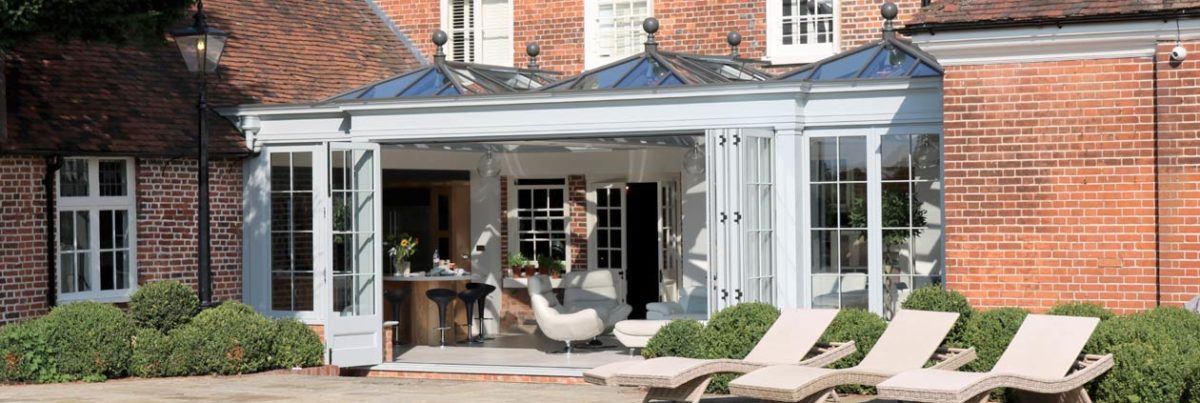In the 17th to the 19th centuries orangeries were symbols of prestige and wealth. Fine structures with a distinguished classical architectural form that stood in the grounds of fashionable and period residences that would have been used for over wintering citrus trees. Today, the definition of a timber orangery is now also used to describe a glazed building which by its design and construction differs from a typical conservatory.
Timber Orangery Design
A well-designed timber orangery should always follow the ‘Classical Orders of Architecture’, which determines the scale and proportion of the individual elements – such as entablature depth, column widths and heights, fenestration, and glazing detail, all in relation to one other.
A key signature of a timber orangery is the bold colonnade affect and an orangery without this element is simply a glazed structure without architectural merit or identity. An orangery will generally have wide classical pilasters flanking each window or door-set and these are often mirrored internally. They give a shallow roof pitch giving the effect of a diminished roof and creating a roof profile that is less imposing and more suitable to certain architectural styles.

Timber Orangery Roof
The choice in roof style can completely change the feel of your orangery and therefore is an important decision to make. A solid roof will give an increased feeling of privacy as well as allowing the exterior to harmonise with the existing structure. A glass roof will allow more natural light into the timber orangery and give the sense of a more open and spacious room.

Timber Orangeries Materials
Timber orangeries are regularly designed and built with a traditional solid roof construction – either lead covered or incorporating the use of traditional roofing materials such as a roofing slate or tile to complement the house. Internally, they will have a plasterboard finish and are trimmed with decorative hip beams and timber mouldings.

